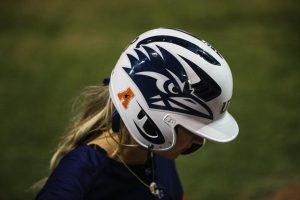_cyber_security__gallery.jpg)
Rob Pistocchi, The Paisano
“Ever use AirRowdy? Do you think AirRowdy is secure? — it isn’t,” said Dr. Glenn Dietrich, UTSA director of the Center for Education and Research in Information and Infrastructure Security at the College of Business, describing wireless networks’ potential vulnerabilities.
UTSA, alongside five other universities, has been chosen as a member for the Army Reserve’s Private Public Partnership Program (Cyber P3) to train soldiers in cyber security to prevent and defend the nation from cyber attacks.
The Army Reverse’s CP3 initiative targeted those universities capable of providing soldiers with the proper education and training in cyber security. Depending on an Army Reservist’s choice, an individual enrolled in the program can take anywhere from 120 hours — a full degree program much like any UTSA student — to numerous specialized courses to become knowledgeable in specific cyber security fields, such as digital forensics or cyber range.
“What we teach these reservists is network defense, how do you detect there is a threat, how do you prevent them from getting into your system,” said Dietrich. “(And) how do you design a system so that if they do get in they don’t do much damage.”
Dietrich explains, however, that the courses are more than reading textbooks and taking tests. Enrolled students will solve practical scenarios cyber professionals encounter daily. For instance, master level students perform vulnerability assessments with companies to determine if their systems contain any weaknesses that are susceptible to manipulation, which may compromise data security.
Through the Internet, students conduct penetration testing in attempts to gain access into the company’s system via open ports on the initial file server, compiling results in a professional report showing company officials their system’s weaknesses.
“Our students get real world experience in this case and the company gets a very high quality consulting assessment,” said Dietrich. “We give (students) lectures, we give them projects, they use actual commercial software in some cases, we have probably 15 classes that we teach to our undergrad students and each one addresses a different area. So we would teach this to the reserves or tailor something for them.”
Similar projects include students analyzing artificial data through Wireshark — a program that monitors traffic on a network — and reporting what information is transferred across networks.
Additional training areas include digital forensics (data recovery), security of cyber physical systems (protection of electrical grid and water pipelines) and cyber range, a network defense system where students are separated into blue and red teams to either exploit vulnerabilities and attack systems or defend them from intruders.
“It’s getting to be a very dangerous world for people — there’s a lot of privacy issues involved in cyber, there’s a lot of hacking or exploiting of your identity,” said Dietrich. “The software changes, the hardware changes — it changes daily.”
Despite increased awareness of privacy issues, Dietrich expects the program to provide quality instruction to students and army reserves maintaining UTSA’s status as a top tier university.
“The academic excellence is one of the reasons why the (Army) came to us. We were ranked number one in cyber security and our program’s been recognized long before as one of the best in the country,” said Dietrich. “(The partnership) will help the military, will provide training and jobs, and will help UTSA by increasing our enrollment while providing us an opportunity to design specialized course work to help in their training (and) pass on to our students.”









